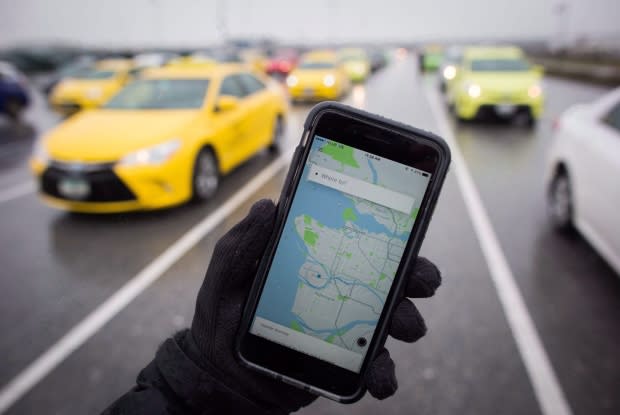Taxi industry hopes to placate customers before ride-sharing arrives in B.C.
As ride-hailing services like Uber and Lyft are set to arrive in British Columbia next year, complaints about long waits for taxi service continue.
In response, the taxi industry says it's making moves to modernize its service by applying to put more cars on the road and offering discounts on rides booked through a taxi app.
"The complaints, I do understand," said Mohan Kang, president of the B.C. Taxi Association.
"I'm not trying to defend the taxi industry from the complaints or not improve service."

Kang said he's not against ride-hailing services coming to B.C., but is concerned that the taxi industry will be at a disadvantage.
"There has to be some sort of even playing field because you can't be cherry picking [regulations and restrictions]," he told Stephen Quinn, the host of CBC's The Early Edition.
"Our concern from day one has been that there has to be safety issues addressed."
More taxis as a solution
Kang, who's been in the industry for roughly 40 years and driven taxis for two of those decades, says he acknowledges the validity of the complaints — and sees expanding the fleet size as the solution.
The government approved a 15 per cent increase in taxi fleets across the province, which would mean 300 more cabs in the Lower Mainland and another 200 throughout the province.
"There is a problem and I'm hoping that with the current increase, the improved service should be here," he said.
"The 15 per cent increase would help to decrease those complaints because when there are less taxis, there's more waiting period and you're bound to get complaints."

But, Kang emphasized, more taxis won't always satisfy every customer.
"There are certain days where it doesn't matter what you do, there won't be enough taxis — whether it's New Year Day or there is really, really bad weather or there's heavy congestion on the road," he said.
"At certain times, there has to be patience shown by the customers also."
Service should normally be provided within five to ten minutes, he said, but waits are sometimes an unavoidable part of life.
"People have to understand that there are certain times when you are going to wait — like we wait at the bank, we wait at the airport, we wait in the bus line," he said.

